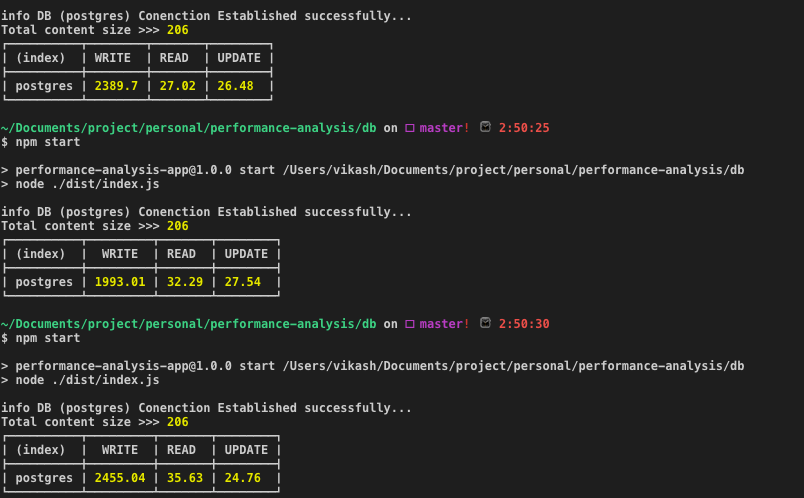

Using the jsonpath operators over the functions allows for potential future performance enhancements.

To demonstrate the differences in methods of querying JSON documents, consider a document containing information about an event that has several keys including a date and a language.
POSTGRES JSON QUERY HOW TO
PostgreSQL 12 adds support for the SQL/JSON path language allowing developers the choice of how to query their JSON documents. Since then, the International Organization for Standardization (ISO) has released a standard manner to interact with JSON inside of a database, the SQL/JSON path language. As one of the first relational databases to support JSON, PostgreSQL created many functions and operators to interact with JSON documents through SQL. Native JSON support was first added to PostgreSQL 9.2 in 2012 with the introduction of a JSON datatype. In addition to the pg_stat_progress_create_index view, PostgreSQL 12 also introduces the pg_stat_progress_cluster view that tracks the progress of a CLUSTER command. REINDEX CONCURRENTLY | building index: scanning table | 1639345 | 220340 Postgres=# SELECT command, phase, blocks_total, blocks_done FROM pg_stat_progress_create_index Ĭommand | phase | blocks_total | blocks_done This is useful for estimating when a command will complete. This view shows the overall progress of an index creation. PostgreSQL 12 introduces a new system view, pg_stat_progress_create_index. With limited maintenance windows, administrators frequently must make decisions to allow an operation to continue or stop it. Index builds are resource intensive commands consuming a high amount of CPU resources. While performing maintenance operations like rebuilding indexes, knowledge of the progress of the operation is often required. The reduced locking of REINDEX CONCURRENTLY comes as the price of longer index build times, but reads and writes are still allowed on the table keeping it online during the operation. The new REINDEX CONCURRENTLY command takes a ShareUpdateExclusiveLock, which only prevents concurrent changes to the table structure. Relation | | ShareUpdateExclusiveLock | t Locktype | transactionid | mode | granted Postgres=# SELECT locktype, transactionid, mode, grantedįROM pg_locks WHERE relation = 'events'::regclass

Postgres=# REINDEX TABLE CONCURRENTLY events PostgreSQL has a REINDEX command that rebuilds all indexes on a given table, but the REINDEX command takes a prohibitive lock in many production environments. To take advantage of the new B-tree format, indexes must be created on PostgreSQL 12. Depending on the data in the indexes, these improvements can result in some B-tree indexes being as much as 40% smaller on PostgreSQL 12.ĭatabases upgraded from an older version of PostgreSQL still have the older B-tree format. PostgreSQL 12 changes the logic of splitting B-tree index pages to use the context of duplicate index entries and uses some compression techniques.
POSTGRES JSON QUERY FREE
However, if the data has many duplicate index entries, splitting in the middle leaves a large amount of free space potentially unused. If the data being added to the table is somewhat random, splitting in the middle is ideal. In most cases, PostgreSQL splits those pages in the middle so that each newly split page has an equal amount of data and free space. When B-tree indexes grow, the data structures need to stay balanced so that when a particular leaf page becomes full, the page must be split. As tables grow, so do the corresponding indexes. B-tree indexes are used to index most types of data from integers that are primary keys to strings that are email addresses. In PostgreSQL, the default index type is a B-tree. I cover the benefits of these new features and show examples of how to adapt these features to existing applications. Others require changes to existing applications or processes to use them. Some of these features are transparent and simply upgrading to PostgreSQL 12 can leverage them. I explore how they can be incorporated into existing development and operational practices. In this post, I take a close look some of the exciting new features in PostgreSQL 12. PostgreSQL 12 introduces features opening up new development opportunities while simplifying the management of some already robust capabilities, such as new ways to query JSON data, enhancements to indexes, and better performance with partitioned tables. The PostgreSQL community continues its consistent cadence of yearly major releases with PostgreSQL 12.


 0 kommentar(er)
0 kommentar(er)
